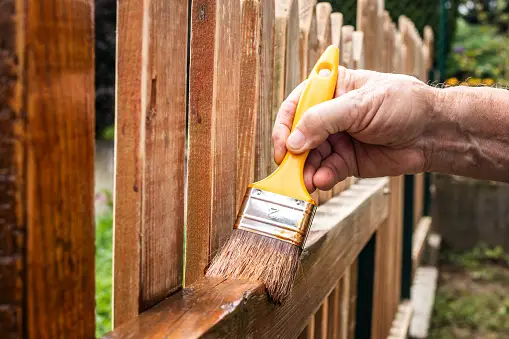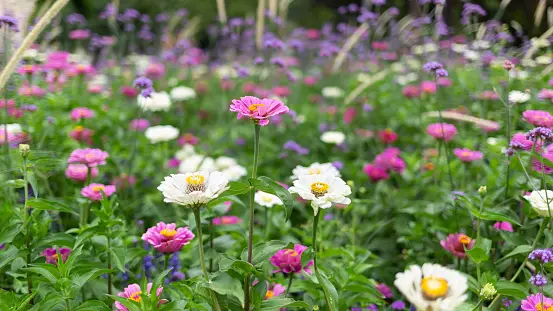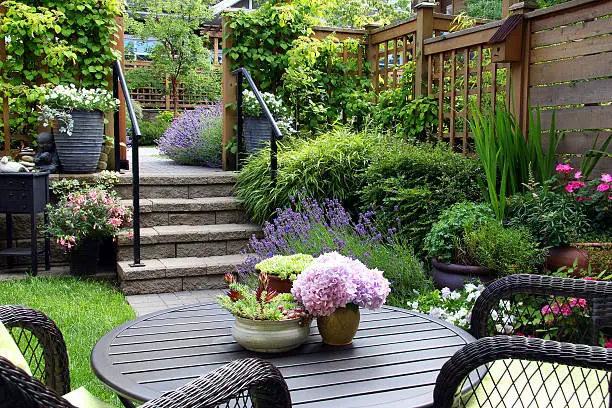Learn how you can go about transforming your garden turning it into one of the best gardens in your area.
Reimagining Your Garden: A Guide to Transforming Your Outdoor Space
The garden – a sanctuary for relaxation, a canvas for creativity, and a vital connection to the natural world. But sometimes, what was once a source of joy can become stagnant, failing to spark the same sense of wonder. If your garden feels uninspired, monotonous, or simply doesn't reflect your evolving style, it might be time for a transformation. However, before diving headfirst into a landscaping overhaul, careful consideration of key factors is crucial. Here's a comprehensive guide to equip you for a successful garden makeover, ensuring your outdoor space continues to be a source of beauty and enjoyment.
Assessing Your Existing Garden:
Taking stock of your current garden is the first step. This isn't about identifying flaws; it's about understanding the existing foundation upon which you'll build your vision.
- Style and Ambiance: What is the overall feel of your garden currently? Is it formal and structured, or relaxed and informal? Does it evoke a specific theme, like a cottage garden or a Japanese zen garden?
- Plant Inventory: Identify the existing plants and their characteristics. Are there mature trees or shrubs that provide shade or privacy? Are there established perennials that bloom year after year?
- Sun and Shade Patterns: Observe how sunlight moves across your garden throughout the day. Knowing these patterns will guide your plant selection for optimal growth.
- Soil Conditions: Test your soil's pH and nutrient levels. This will help determine which plants will thrive in your garden's specific environment.
- Existing Features: Consider any existing hardscapes like patios, walkways, pergolas, or water features. These elements can be incorporated into your new design or serve as inspiration for further enhancements.
Identifying Your Goals and Preferences:
Once you understand your existing space, define what you hope to achieve with the transformation.
- Functionality: Do you envision the garden as a space for entertaining, relaxation, or a dedicated vegetable patch? Identify the primary functions you desire.
- Aesthetics: What kind of atmosphere do you want to create? Do you yearn for a vibrant and colorful space, a calming oasis, or a wildlife haven?
- Maintenance Needs: Consider your lifestyle and the amount of time you're willing to dedicate to maintaining your garden. Low-maintenance plants and hardscapes might be preferable if you have a busy schedule.
- Budget: Be realistic about the financial resources you can allocate for the project. Factor in costs for plants, materials, tools, and potential professional landscaping services.
Designing Your Dream Garden:
With a clear understanding of your existing garden and your desired goals, it's time to unleash your creativity! However, a well-designed garden goes beyond aesthetics; it blends functionality with beauty.
- Sketching a Layout: Even a simple sketch can help visualize your ideas. Map out the placement of plants, hardscapes, and key features like seating areas or pathways.
- Creating Zones: Divide your garden into designated areas based on function. For example, a patio for entertaining, a secluded reading nook, or a dedicated herb garden.
- Plant Selection: Choose plants that complement your desired style, thrive in your climate and soil conditions, and provide visual interest throughout the year. Consider incorporating a mix of evergreen plants for year-round structure, flowering perennials for seasonal bursts of color, and low-growing groundcovers to minimize weed growth.
- Hardscape Elements: Paths, patios, walls, and water features add structure and visual appeal. Choose materials that harmonize with your home's architecture and the overall garden style.
- Sustainable Practices: Embrace sustainable gardening practices like rainwater harvesting, composting, and using native plants that attract beneficial pollinators.
Bringing Your Design to Life:
With a finalized plan in hand, it's time to roll up your sleeves and witness your vision come to life.
- Preparing the Soil: Amend the soil as needed based on your test results. This might involve adding organic matter to improve drainage or fertility.
- Planting: Follow proper planting techniques for each specific plant, ensuring proper spacing and depth.
- Building Hardscapes: For complex hardscape elements like patios or walls, consider hiring a professional landscaper to ensure structural integrity and safety.
- Adding Finishing Touches: Accessorize your garden with decorative elements such as bird feeders, sculptures, or colorful pots to personalize your space.
Maintaining Your Transformed Garden:
The satisfaction of transforming your garden from a neglected space to a flourishing oasis is unparalleled. But the journey doesn't end there. A thriving garden requires ongoing care and cultivation to maintain its beauty, functionality, and the health of its inhabitants. This guide delves into essential practices for ensuring your transformed garden continues to be a source of enjoyment and pride.
Watering Wisely:
Watering is crucial for plant health, but overwatering can be detrimental. Here are strategies for efficient and effective watering:
- Understanding Plant Needs: Different plants have varying water requirements. Research the specific needs of each plant in your garden. Drought-tolerant plants require less frequent watering than moisture-loving varieties.
- Soil Moisture Levels: Don't water on a schedule; water based on the moisture content of the soil. Stick your finger into the soil a few inches deep. If it feels dry, it's time to water.
- Watering Techniques: Deep watering, where you soak the root zone thoroughly, is preferable to frequent shallow watering. This encourages roots to grow deeper, making plants more resilient during dry spells. Utilize watering cans, hoses with soaker attachments, or drip irrigation systems for targeted watering that minimizes water waste.
- Early Morning Watering: Water your plants early in the morning, allowing the water to soak into the soil before the heat of the day increases evaporation.
- Mulching: A layer of mulch around your plants helps retain moisture in the soil, reducing the frequency of watering needed. Organic mulches like shredded bark or wood chips also suppress weeds and regulate soil temperature.
Nourishing Your Plants:
Plants require nutrients for optimal growth, flowering, and disease resistance. Here's how to ensure proper nourishment:
- Soil Testing: Regularly test your soil to assess its nutrient levels. This will guide your fertilizer application strategy.
- Organic vs. Synthetic Fertilizers: Organic fertilizers, like compost or composted manure, provide long-term benefits by improving soil structure and fertility. Synthetic fertilizers offer a quicker nutrient boost but may need to be applied more frequently. Choose the approach that best suits your needs and preferences.
- Composting: Composting kitchen scraps and yard waste creates nutrient-rich compost that you can use to amend your soil and feed your plants.
- Targeted Fertilization: Fertilize specific plants based on their needs. For example, flowering plants might benefit from fertilizers with higher phosphorus content, while leafy greens thrive with more nitrogen.
Weed Control: Maintaining a Pristine Landscape
Weeds compete with your desired plants for water, nutrients, and sunlight. Here are methods for effective weed control:
- Manual Removal: For small weed populations, hand-pulling is a simple and effective solution. Ensure you remove the entire root system to prevent regrowth.
- Mulching: As mentioned earlier, a layer of mulch helps suppress weed growth by blocking sunlight from reaching weed seeds.
- Organic Weed Control: Natural herbicides derived from vinegar or citrus oils can be used for spot treatment of weeds on patios or walkways. However, be cautious as these can also harm nearby desirable plants.
- Selective Herbicides: For stubborn weeds or large infestations, consider using selective herbicides that target specific types of weeds while leaving your desired plants unharmed. Always read and follow the instructions on the herbicide label carefully.
Integrated Pest Management: Protecting Your Plants
Pests and diseases can wreak havoc on your garden. Here's a proactive approach to integrated pest management (IPM):
- Prevention is Key: Healthy plants are more resistant to pests and diseases. Focus on providing optimal growing conditions for your plants.
- Identifying Pests and Diseases: Learn to identify common pests and diseases in your area. Early detection allows for timely intervention.
- Beneficial Insects: Encourage beneficial insects like ladybugs or lacewings that prey on harmful pests naturally. Provide them with habitat by planting flowering plants that attract them.
- Organic Pest Control: If necessary, use organic methods like insecticidal soap or neem oil to control pests. These methods are less harmful to the environment and beneficial insects.
- Minimal Use of Pesticides: Synthetic pesticides should be a last resort. Improper use can harm beneficial insects, pollute the environment, and lead to pest resistance.
Pruning for Beauty and Health:
Pruning encourages healthy growth, improves plant shape, and stimulates flowering. Here are some basic pruning principles:
- Understanding Pruning Objectives: Prune with a specific purpose in mind, whether it's removing dead or diseased branches, shaping shrubs, or encouraging flowering.
- Pruning Techniques: Utilize the proper pruning techniques for each plant species. Some plants
Conclusion
Maintaining your transformed garden may require dedication, but the rewards are immeasurable. Witnessing your plants flourishes, attracting pollinators, and creating a vibrant space for relaxation makes the effort worthwhile. Embrace the ongoing learning process – there's always something new to discover in the world of gardening. Remember, success lies in observing your garden, responding to its needs, and adapting your practices as necessary. With consistent care and a sprinkle of love, your transformed garden will continue to be a source of beauty, tranquillity, and a constant reminder of your creative vision brought to life. So, grab your gardening gloves, step outside, and immerse yourself in the joy of cultivating a thriving outdoor haven.








.webp?locale=en)

















